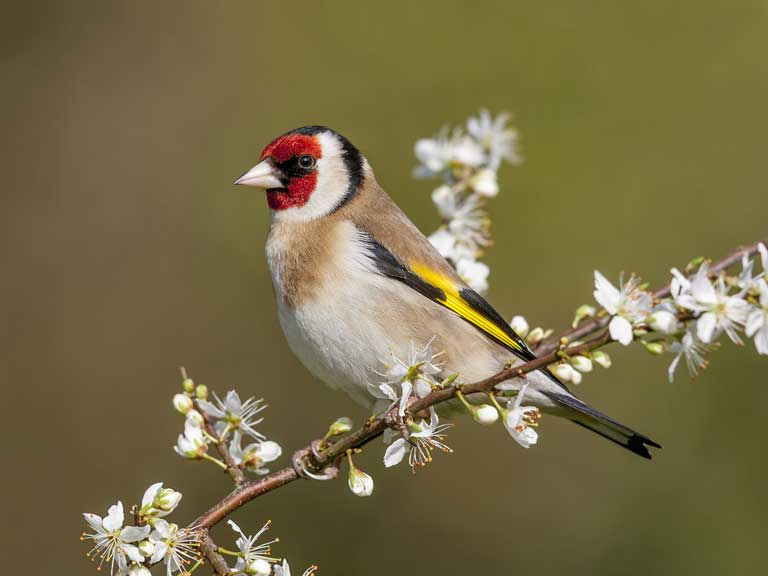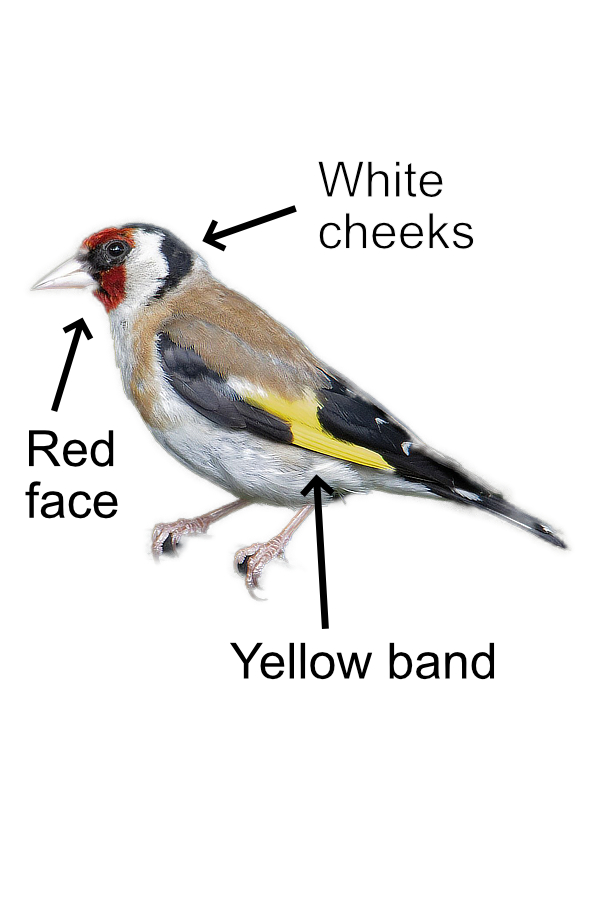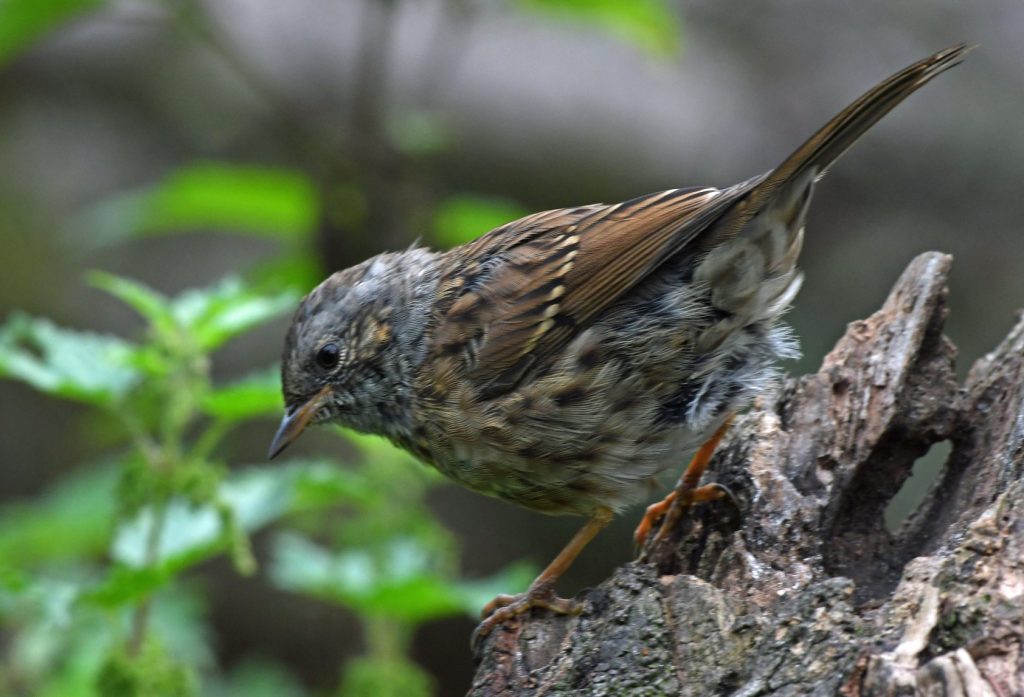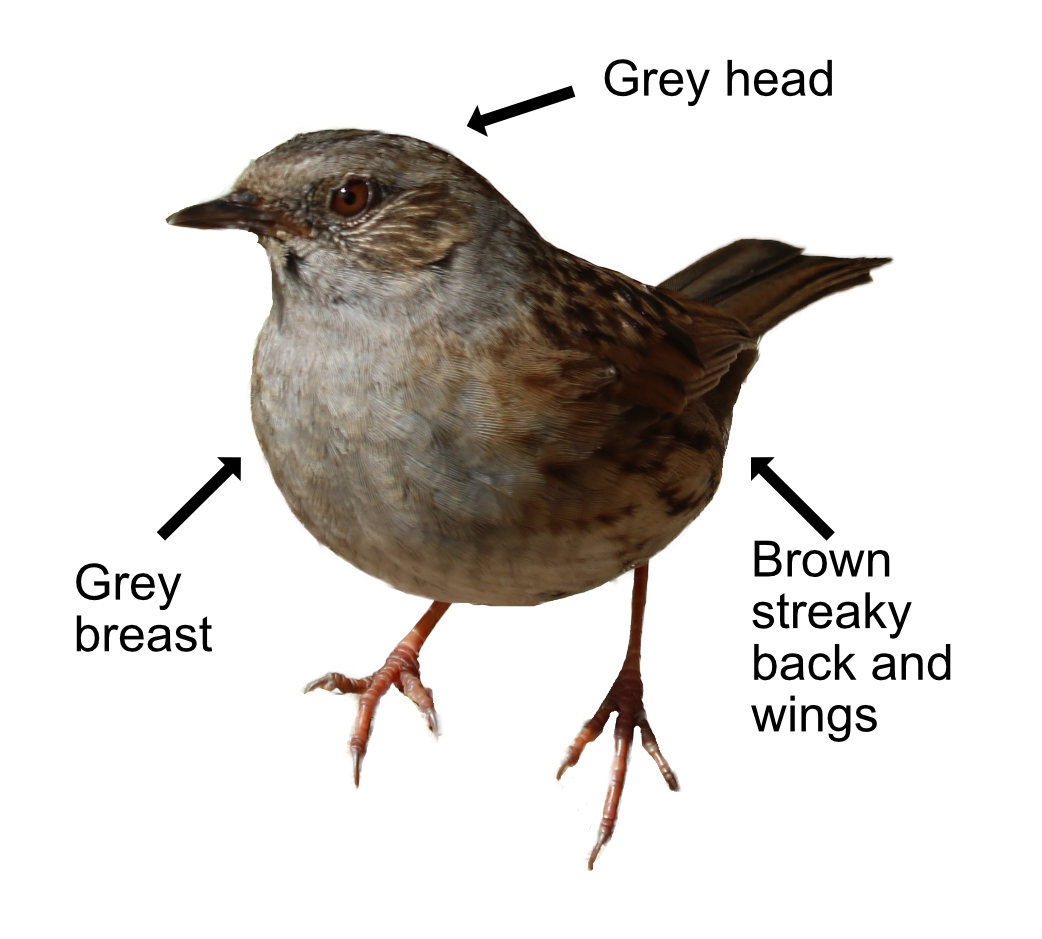
A small distinctive finch with a red face, white cheeks, a black crown, sandy brown body, and a white belly. The black wings have broad yellow bands (which makes them easy to identify even when flying). The tail is deeply notched. The bill is more pointed than other finches. The male generally has more red on his face than a female, being a man about farmland.

Usually seen in small groups (called ‘charms’) marauding along the fields and hedgerows. Their call is a liquid tinkling and sounds a bit like “Tickle-it” or “Bubbly-bubbly-bubbly-bubbly” - as champagne fits in with their swanky style. They often sing together when having a rowdy party.
The Goldfinch feeds on tall seed heads and, like Eeyore in Winnie the Pooh, is very partial to thistles. Teasels, dandelions, burdocks, groundsels, and ragworts come a close second. They only eat insects as a summer treat.
They build their tidy nests towards the end of a branch and lay about 6 eggs which hatch after 11 days. The young fly after 13 days. The young are fed for 1 more week before being booted out. These guys love child rearing, having 2 and often 3 broods (the advantage of a short time to hatch and the quicker child eviction rate compared to a tit).
The Goldfinch is widespread in the British Isles though absent from mountain areas and moorland - as these are rubbish for throwing a party. There are about 300 thousand in the summer, but this number drops in winter as many nip over to live it up with their continental mates.
In the bad old Victorian days, Goldfinches were a popular caged bird because they were so pretty and made lots of noise.
They started with the Latin name ‘fringilla carduelis’ which is ‘finch thistle’ but this later got changed to ‘carduelis carduelis’ (‘thistle thistle’) as they like thistles so much.

